How to Train Your Dog to Sit Calmly for Greetings
Isn’t it just the worst when you are walking down the street or at a friend’s house and a large dog jumps up at you out of nowhere? Maybe he’s being friendly. Still, it can be quite alarming and even unsafe.
Small dogs might get away with jumping on strangers, but all dogs should learn their manners. This post will go over how to teach a dog to calmy sit and wait for a greeting from people.
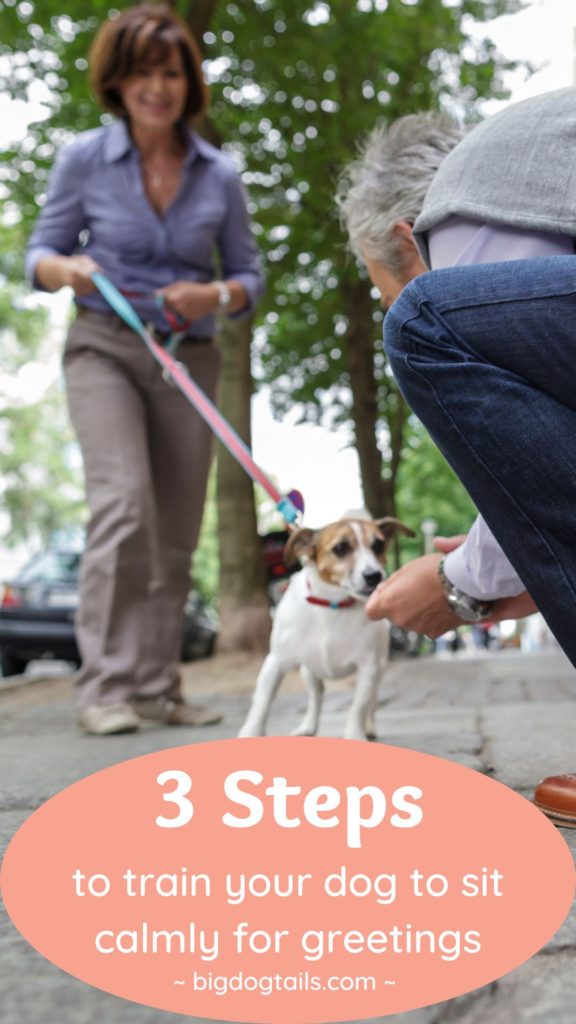
What does it look like when a dog sits calmly for greeting?
A dog who sits calmly to wait for a greeting doesn’t necessarily need to sit the entire time, but he can. The idea behind getting a dog to sit calmly is to ensure he doesn’t jump up and scare on strangers. If he is on a leash, he should not break his behaviors unless you give him the OK to do so with a cue word like “break.” At that point, he is allowed to walk to other people and calmly get pets. When you are ready to go, the dog should also respond quickly to a recall.
Why should you train for this behavior?
It’s always important for large dogs to learn good manners; however, people can be scared of small dogs too. You don’t want your dog to rudely jump up on strangers who are walking past or knock someone over. You also don’t want your dog to growl, snap, or bark at strangers who are walking nearby.
Learning this skill will help you keep your dog’s four paws on the floor when meeting someone new. It’ll also help you feel comfortable telling strangers no if your dog will react poorly to meeting someone new.
How to train your dog to greet visitors calmly
If you know how to teach your dog to heel and you know how to teach your dog a sit stay, you can train your dog to sit calmy for greeting. All you need is his normal leash and collar, treats, and a friend to practice with. It’s also a good idea to train your dog to do a reliable recall.

Milestone #1: Get your dog into a heel and gauge his energy
You always want to get your dog into a heel and focused on you, while facing forward so that he can see others approaching. You don’t want him to be caught off guard and scared when a stranger approaches.
As the person approaches, they may or may not ask if they can pet your dog. Even if they don’t ask, you should feel empowered to say no. For example, if you notice your dog is loading and may display unfriendly behavior or undesired behavior (like jumping), you can say no.
Pay attention to your dog’s cues to identify any loading behavior to known triggers to mitigate undesired behaviors.
Remember, some dogs are triggered by meeting new people. Sometimes they growl or sometimes they are just so excited they can’t keep all four paws on the floor. You’ll notice your dog loading when he spots the trigger, or the stranger. When the person comes within a specific threshold, the dog will exhibit that undesired behavior. Make sure you learn your dog’s triggers and loading behavior to prevent any negative experiences for you, your dog, or others.
Milestone #2: As the person approaches, focus and pay your dog
As your friend approaches, get your dog to focus on you and give him treats. Keep giving him treats until your friend is a couple feet away. Once your friend asks to pet your dog, you can say yes and then “break” to your dog. This cue word signals to the dog he can walk about freely.
The dog should walk over calmly to your friend to get pets. If at any point the dog starts to get jumpy, your friend should back up. Get your dog back into a heel, focused on you, and then try it again. If you dog jumps, that’s OK – your friend should back up and ignore the dog any time that happens.
Milestone #3: Recall your dog before he gets too excited
This is particularly true for young puppies. If you give them a little bit of freedom, they may get carried away. For example, your pup may start off walking over to your friend very quietly and calmly but over time get excited and begin jumping. You want to watch for that and avoid the jumping behavior. You do this by calling your dog’s name and recalling him with “come.”
Your dog will trot back to you, and make sure to pay him with a treat. Then refocus him and practice again with your friend.
Over time you can minimize the treats. Don’t be surprised if you take months to eliminate treats entirely. This is a behavior that’s tough to learn because it’ll be used in all kinds of unfamiliar environments with strangers. It’s totally OK if it takes a long time to learn. Just remember to watch your dog’s loading cues and be comfortable telling strangers no to petting.
Even if a stranger is already approaching for a greeting, always feel empowered to change your mind and say no.
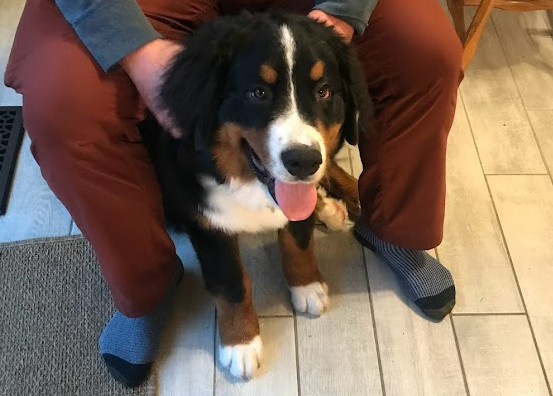
Conclusion
In order to keep your dog and others safe, you should teach your dog to sit calmly and wait for others to greet them. To do this, you should:
- Get your dog in a heel position. This is important so that the dog can see that a person is approaching so they aren’t caught off guard.
- As the person approaches, keep feeding your dog treats to entice them to hold a sit.
- When the person asks if they can greet your dog, say yes and then break your dog.
- At this point, your dog is allowed to meet the stranger for pets.
- Call your dog back to prevent your pup from getting too excited.
This can be a challenging one to learn. How is training to sit calmly for greetings going with your dog? Let us know in the comments!

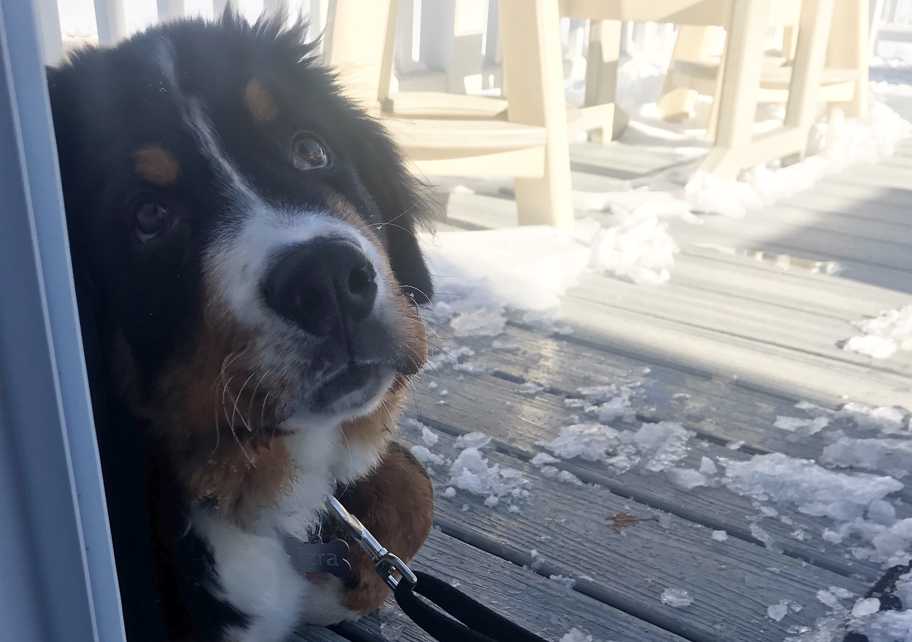
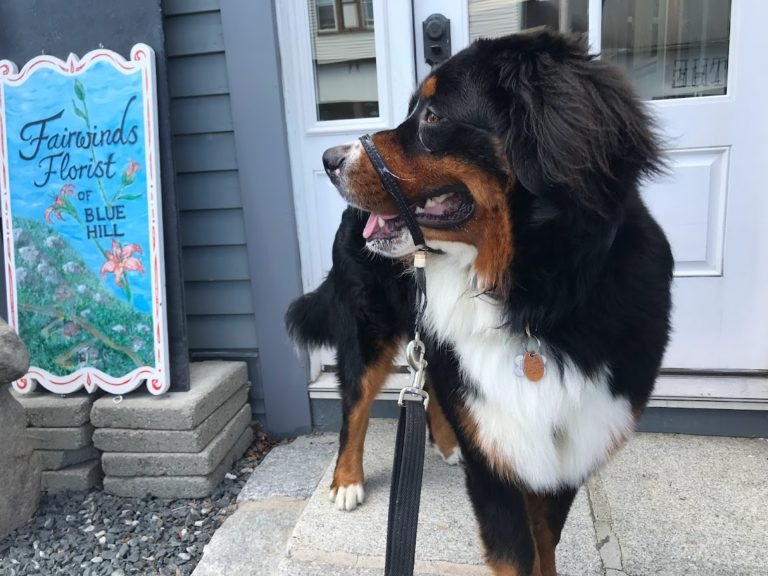
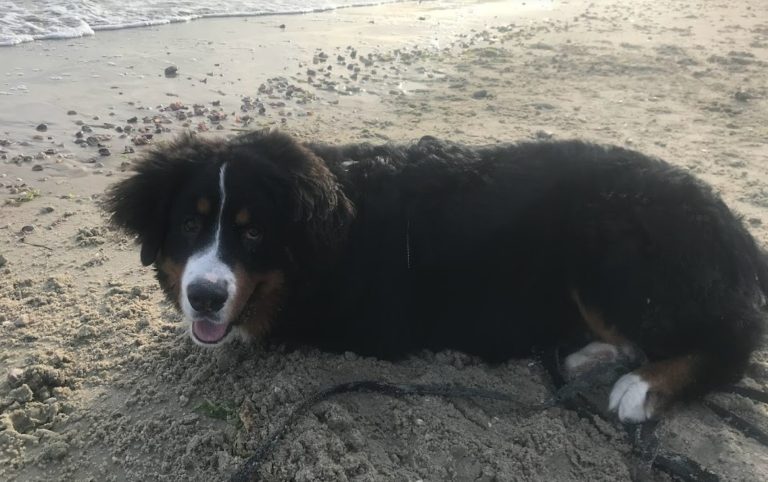

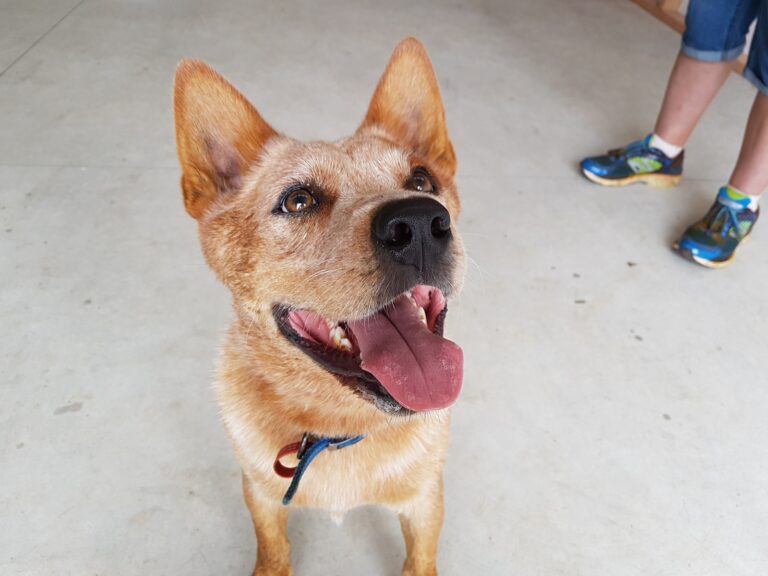
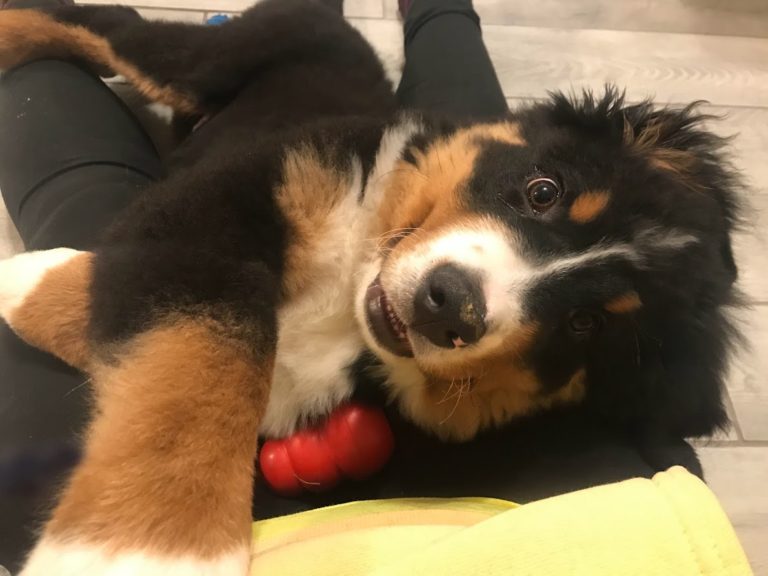
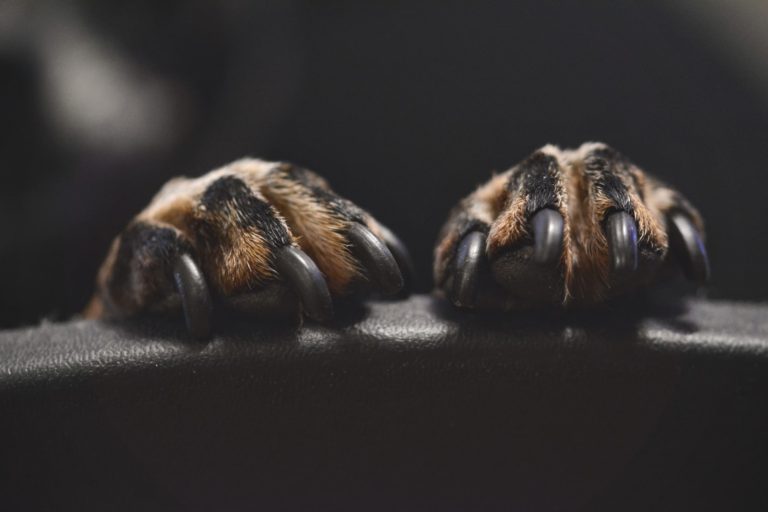
3 Comments
Comments are closed.